 Search by Keyword
|
“FOR NO ONE”
(John Lennon – Paul McCartney)
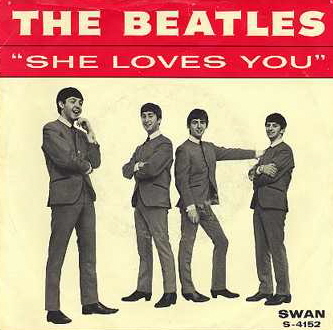 In June of 1963, John and Paul took an impressive stride forward as songwriters by composing a song in the third person. “It was someone bringing a message. It wasn’t us any more, it was moving off the ‘I love you, girl’ (subject matter). There’s a little distance we managed to put in it which was quite interesting.” That song was “She Loves You,” their first million-selling British hit. In June of 1963, John and Paul took an impressive stride forward as songwriters by composing a song in the third person. “It was someone bringing a message. It wasn’t us any more, it was moving off the ‘I love you, girl’ (subject matter). There’s a little distance we managed to put in it which was quite interesting.” That song was “She Loves You,” their first million-selling British hit.
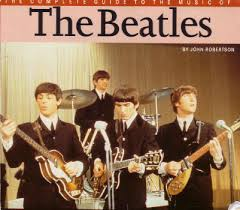 As time progressed, their growth as songwriters expanded to include a composition sung as if the protagonist is either speaking to himself, as if into a mirror, or consoling a dear friend. In their 1966 classic “For No One,” the singer is recognizing that there is “no sign of love” remaining in the eyes of the woman in question. The overall results were such that author John Robertson, in his book “The Complete Guide To The Music Of The Beatles,” accurately referred to the song as “another remarkable McCartney ballad, melodically sophisticated and lyrically mature.” There can hardly be found a reviewer to disagree. As time progressed, their growth as songwriters expanded to include a composition sung as if the protagonist is either speaking to himself, as if into a mirror, or consoling a dear friend. In their 1966 classic “For No One,” the singer is recognizing that there is “no sign of love” remaining in the eyes of the woman in question. The overall results were such that author John Robertson, in his book “The Complete Guide To The Music Of The Beatles,” accurately referred to the song as “another remarkable McCartney ballad, melodically sophisticated and lyrically mature.” There can hardly be found a reviewer to disagree.
Songwriting History
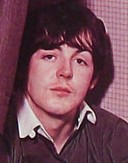 As was his habit, Paul took advantage of a Beatle-less vacation out of the country and, while away, he found the atmosphere perfect for writing a song. (Examine “Things We Said Today” and “Yesterday” for other vacation-inspired compositions.) “I wrote that on a skiing holiday in Switzerland, in a hired chalet amongst the snow,” Paul remembered about "For No One" in 1984. This vacation took place in March of 1966 with girlfriend Jane Asher in Klosters, Switzerland where they rented a chalet about half a mile from town. As was his habit, Paul took advantage of a Beatle-less vacation out of the country and, while away, he found the atmosphere perfect for writing a song. (Examine “Things We Said Today” and “Yesterday” for other vacation-inspired compositions.) “I wrote that on a skiing holiday in Switzerland, in a hired chalet amongst the snow,” Paul remembered about "For No One" in 1984. This vacation took place in March of 1966 with girlfriend Jane Asher in Klosters, Switzerland where they rented a chalet about half a mile from town.
 In the book “Beatles Anthology,” Paul goes into a bit more detail: “I was in Switzerland on my first skiing holiday. I’d done a bit of skiing in ‘Help!’ and quite liked it, so I went back and ended up in a little bathroom in a Swiss chalet writing ‘For No One.’ I remember the descending bass-line trick that it’s based on, and I remember the character in the song – the girl putting on her make-up...That's often when I write stuff, on holiday. I'm just sort of relaxed and there's maybe not much to do.” In the book “Beatles Anthology,” Paul goes into a bit more detail: “I was in Switzerland on my first skiing holiday. I’d done a bit of skiing in ‘Help!’ and quite liked it, so I went back and ended up in a little bathroom in a Swiss chalet writing ‘For No One.’ I remember the descending bass-line trick that it’s based on, and I remember the character in the song – the girl putting on her make-up...That's often when I write stuff, on holiday. I'm just sort of relaxed and there's maybe not much to do.”
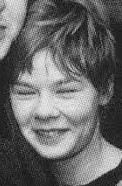 Past interviews from Paul hint at more than just a fictional character for the woman in the song. Steve Turner’s book “A Hard Day’s Write” relates: “In an early interview, Paul said that it was all about his own experience of living with a woman when he was fresh from leaving home. Later he was less specific, saying that he was thinking only of the character of a typical working girl.” Readers may speculate that his three-year relationship with Dot Rhone was the experience used as inspiration for “For No One,” but later insights from McCartney appear to point in another direction. His book “Many Years From Now,” for instance, has him relating: "I suspect it was about another argument. I don’t have easy relationships with women, I never have. I talk too much truth." Past interviews from Paul hint at more than just a fictional character for the woman in the song. Steve Turner’s book “A Hard Day’s Write” relates: “In an early interview, Paul said that it was all about his own experience of living with a woman when he was fresh from leaving home. Later he was less specific, saying that he was thinking only of the character of a typical working girl.” Readers may speculate that his three-year relationship with Dot Rhone was the experience used as inspiration for “For No One,” but later insights from McCartney appear to point in another direction. His book “Many Years From Now,” for instance, has him relating: "I suspect it was about another argument. I don’t have easy relationships with women, I never have. I talk too much truth."
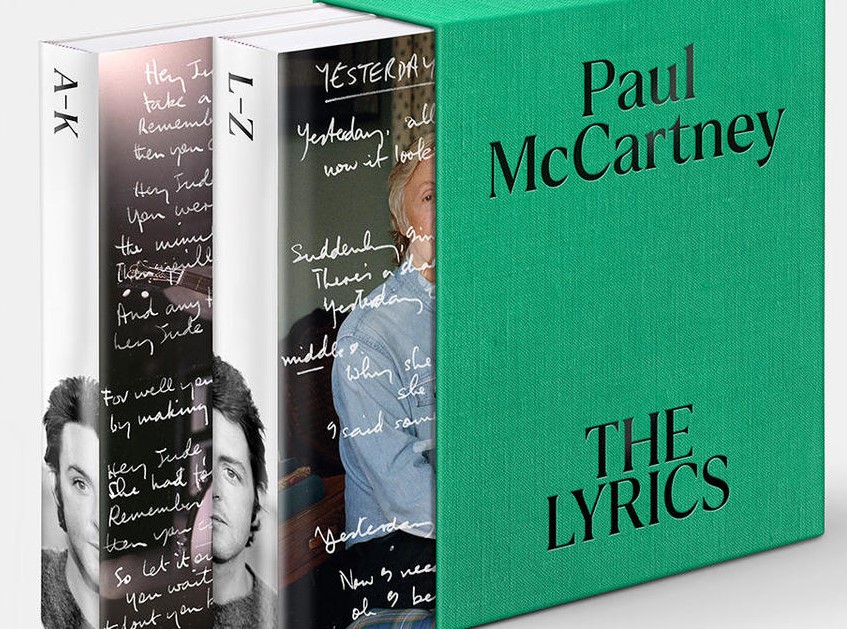 This quote about a recent argument, coupled with Paul's explanation of the song's formation in his 2021 book "The Lyrics," may possibly be pieced together to create a clearer picture "It's a song about rejection. The breakup, or marking the end of a relationship that didn't work, has always been quite a rich area to explore in a song. Having been through it a few times - as I suppose a lot of people have - it was an emotion I could relate to, and it seemed like a good idea to put into a song because probably a lot of other people could relate to it too. In the song, I'm talking about two people who've broken up, but obviously, as with any writer, it all comes from your own experience, and inevitably you're talking about yourself." This quote about a recent argument, coupled with Paul's explanation of the song's formation in his 2021 book "The Lyrics," may possibly be pieced together to create a clearer picture "It's a song about rejection. The breakup, or marking the end of a relationship that didn't work, has always been quite a rich area to explore in a song. Having been through it a few times - as I suppose a lot of people have - it was an emotion I could relate to, and it seemed like a good idea to put into a song because probably a lot of other people could relate to it too. In the song, I'm talking about two people who've broken up, but obviously, as with any writer, it all comes from your own experience, and inevitably you're talking about yourself."
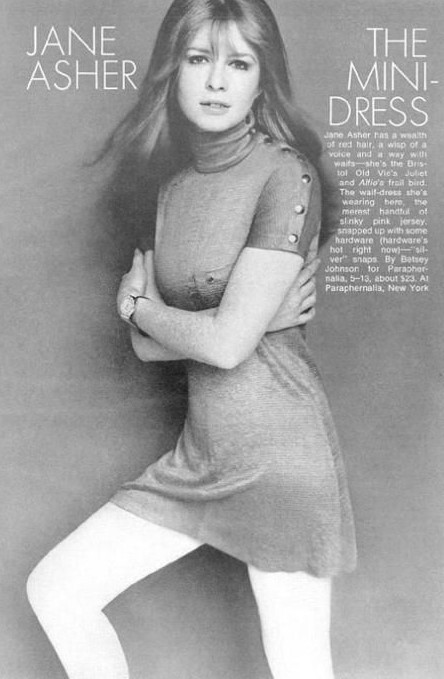 After mentioning his "own experience," Paul brings up what appears to be his misgivings about his then current relationship with actress Jane Asher in which, one can speculate, he may have been in an "argument" with. "At the time, you think any love affair could or should or would or will last forever, unless it's a really quick 'wham, bam, thank you ma'am' one-night stand. But when you're going out with someone, when it's your girlfriend and you've been with her for a reasonable amount of time, it's very different. Jane Asher and I were together for around five years, so at the back of my mind I expected to marry her, but as the time got closer, I think I also realized it wasn't right. You can't ever put your finger on it, but when Linda came along, shortly after Jane and I broke up, I just thought, 'Oh, I dunno, maybe this is more right.' And then when Linda and I got to know each other, I felt, 'This is more me; I'm more her.' And there were little things with Jane where we just didn't quite match up. I love a lot of things about her, and I will always admire a lot of things about her. She's a wonderful woman, but little bits of the jigsaw weren't quite fitting...It's a horrible moment when you've broken up with someone, and you look at them - this person you used to be in love with or thought you were in love with - and none of that old feeling is there. It's like it just switched off too, and it's not great to be on the receiving end of that." After mentioning his "own experience," Paul brings up what appears to be his misgivings about his then current relationship with actress Jane Asher in which, one can speculate, he may have been in an "argument" with. "At the time, you think any love affair could or should or would or will last forever, unless it's a really quick 'wham, bam, thank you ma'am' one-night stand. But when you're going out with someone, when it's your girlfriend and you've been with her for a reasonable amount of time, it's very different. Jane Asher and I were together for around five years, so at the back of my mind I expected to marry her, but as the time got closer, I think I also realized it wasn't right. You can't ever put your finger on it, but when Linda came along, shortly after Jane and I broke up, I just thought, 'Oh, I dunno, maybe this is more right.' And then when Linda and I got to know each other, I felt, 'This is more me; I'm more her.' And there were little things with Jane where we just didn't quite match up. I love a lot of things about her, and I will always admire a lot of things about her. She's a wonderful woman, but little bits of the jigsaw weren't quite fitting...It's a horrible moment when you've broken up with someone, and you look at them - this person you used to be in love with or thought you were in love with - and none of that old feeling is there. It's like it just switched off too, and it's not great to be on the receiving end of that."
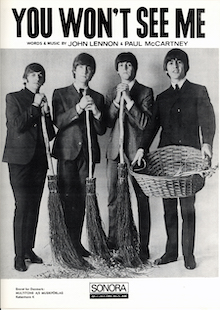 Paul then explores the use of lyrics in the song. "There are two short lines: 'She wakes up / She makes up.' Then you have long lines after the two short ones. 'She takes her time and doesn't feel she has to hurry / She no longer needs you.' Then this: 'And in her eyes you see nothing / No sign of love.'...'Your day breaks' works on the level of both 'your day begins' and 'your day is broken,' and 'She makes up' is working in a couple of ways: putting on makeup and making up after an argument." In this instance, Paul once again mentions an argument, which could very well indicate that his March 1966 Switzerland vacation could very well have been marred by disagreements between him and Jane, resulting in the composer excusing himself to the bathroom of their "Swiss chalet" to write this song about the doubts he was having about their relationship. While he continued with Jane through the early months of 1968 (as evidenced by her presence with Paul in India with the Maharishi), "For No One" may possibly be counted among the Beatles' songs relating to the less-than-harmonious situation he was experiencing with Jane Asher at the time. (See "We Can Work It Out" and "You Won't See Me.") Paul then explores the use of lyrics in the song. "There are two short lines: 'She wakes up / She makes up.' Then you have long lines after the two short ones. 'She takes her time and doesn't feel she has to hurry / She no longer needs you.' Then this: 'And in her eyes you see nothing / No sign of love.'...'Your day breaks' works on the level of both 'your day begins' and 'your day is broken,' and 'She makes up' is working in a couple of ways: putting on makeup and making up after an argument." In this instance, Paul once again mentions an argument, which could very well indicate that his March 1966 Switzerland vacation could very well have been marred by disagreements between him and Jane, resulting in the composer excusing himself to the bathroom of their "Swiss chalet" to write this song about the doubts he was having about their relationship. While he continued with Jane through the early months of 1968 (as evidenced by her presence with Paul in India with the Maharishi), "For No One" may possibly be counted among the Beatles' songs relating to the less-than-harmonious situation he was experiencing with Jane Asher at the time. (See "We Can Work It Out" and "You Won't See Me.")
 Paul first conceived of the song with the title “Why Did It Die?”, as shown on the original lyric sheet, which at the time featured a twice repeated chorus, the first containing the lyrics "Why did it die? / You'd like to know / Cry - and blame her," the second chorus stating, "Why did it die? / I'd like to know / Try - to save it." These choruses eventually were interchanged with the "In her eyes you see nothing..." refrains, this early incarnation of the song also containing alternate verses. The lyrics of the third verse were, "But you wait / you're too late / It's you're deciding why the wrong one wins / the end begins / and you will lose her." After the second chorus, the final verse was written as, "You want her / you need (love) her / so make her see that you believe it may work out / one day you need each other." Paul first conceived of the song with the title “Why Did It Die?”, as shown on the original lyric sheet, which at the time featured a twice repeated chorus, the first containing the lyrics "Why did it die? / You'd like to know / Cry - and blame her," the second chorus stating, "Why did it die? / I'd like to know / Try - to save it." These choruses eventually were interchanged with the "In her eyes you see nothing..." refrains, this early incarnation of the song also containing alternate verses. The lyrics of the third verse were, "But you wait / you're too late / It's you're deciding why the wrong one wins / the end begins / and you will lose her." After the second chorus, the final verse was written as, "You want her / you need (love) her / so make her see that you believe it may work out / one day you need each other."
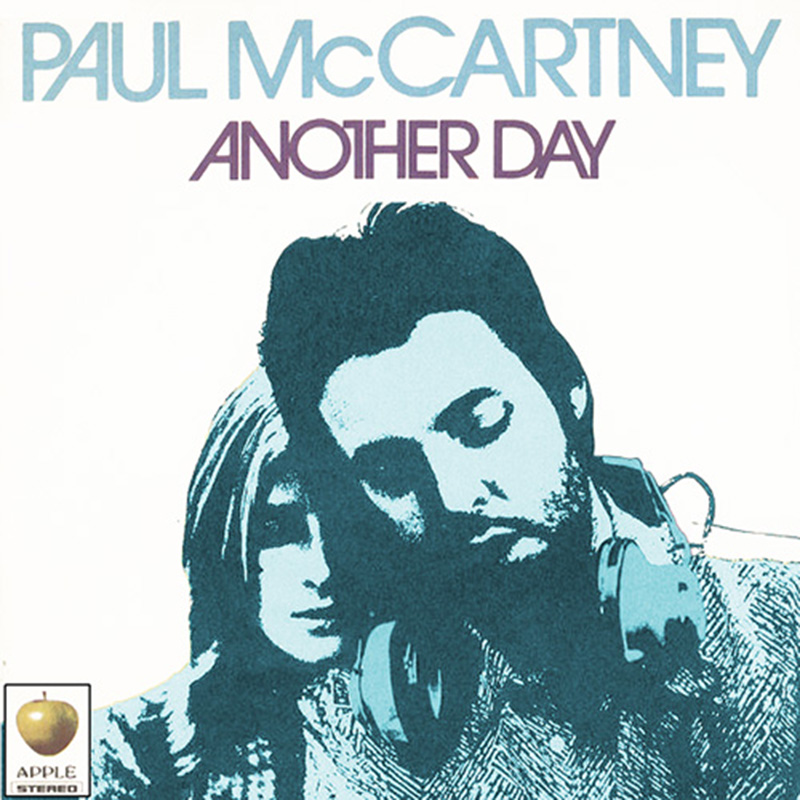 Interestingly, as quoted in Kevin Howlett's book contained in 2022 Deluxe editions of "Revolver," Paul revealed that he wrote a sequel of sorts to "For No One" four years later. "'Another Day' and 'For No One' could be in the same musical. The same girl could go through both those songs. I was thinking of the same kind of character - the working girl on her own; the girl in the bed-sit. When I came to write 'Another Day,' I thought this is the same girl, who woke up and made up in 'For No One.'" The result, of course, became Paul's first solo hit after the break-up of The Beatles. Interestingly, as quoted in Kevin Howlett's book contained in 2022 Deluxe editions of "Revolver," Paul revealed that he wrote a sequel of sorts to "For No One" four years later. "'Another Day' and 'For No One' could be in the same musical. The same girl could go through both those songs. I was thinking of the same kind of character - the working girl on her own; the girl in the bed-sit. When I came to write 'Another Day,' I thought this is the same girl, who woke up and made up in 'For No One.'" The result, of course, became Paul's first solo hit after the break-up of The Beatles.
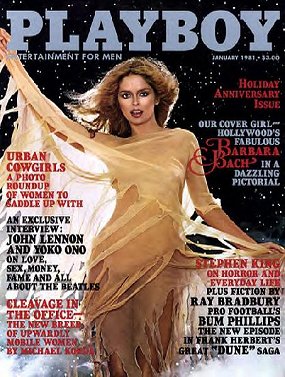 It appears that this was completely a Paul composition without any input from his songwriting partner. John Lennon himself confirms this assumption in his 1972 “Hit Parader” magazine interview when asked about the song. “Paul. Another of his I really liked,” Lennon stated. He continued to praise it in his 1980 “Playboy” magazine interview where he states: “One of my favorite pieces of his, too. That and ‘Here, There And Everywhere.’ A nice piece of work, I think.” It appears that this was completely a Paul composition without any input from his songwriting partner. John Lennon himself confirms this assumption in his 1972 “Hit Parader” magazine interview when asked about the song. “Paul. Another of his I really liked,” Lennon stated. He continued to praise it in his 1980 “Playboy” magazine interview where he states: “One of my favorite pieces of his, too. That and ‘Here, There And Everywhere.’ A nice piece of work, I think.”
Recording History
 At right around the half way mark of recording their “Revolver” album, Paul and Ringo entered EMI Studio Two on May 9th, 1966 at 7 pm for a four hour recording session devoted to beginning Paul’s “For No One.” A simple rhythm track was laid down with Paul playing piano on track two of a new four-track tape while Ringo played very subtly (on snare, hi-hat and kick drum) on track three. It took ten attempts to get it right, only three of these making it through the entire song. Before the "take ten," Ringo asks "Should I just keep it straight then?," to which Paul answers, "Yeah." Ringo clarifies, "Don't do anything else?," which Paul, who is 'in the zone' at the time, answers, "Oh, yeah, yeah, do it, just...," which is followed quickly by Paul counting off "take ten," this ending up being the 'keeper' onto which overdubs will be recorded. At the end of this take, Ringo inquires, "What do you think?," the answer obviously being in the affirmative. At right around the half way mark of recording their “Revolver” album, Paul and Ringo entered EMI Studio Two on May 9th, 1966 at 7 pm for a four hour recording session devoted to beginning Paul’s “For No One.” A simple rhythm track was laid down with Paul playing piano on track two of a new four-track tape while Ringo played very subtly (on snare, hi-hat and kick drum) on track three. It took ten attempts to get it right, only three of these making it through the entire song. Before the "take ten," Ringo asks "Should I just keep it straight then?," to which Paul answers, "Yeah." Ringo clarifies, "Don't do anything else?," which Paul, who is 'in the zone' at the time, answers, "Oh, yeah, yeah, do it, just...," which is followed quickly by Paul counting off "take ten," this ending up being the 'keeper' onto which overdubs will be recorded. At the end of this take, Ringo inquires, "What do you think?," the answer obviously being in the affirmative.
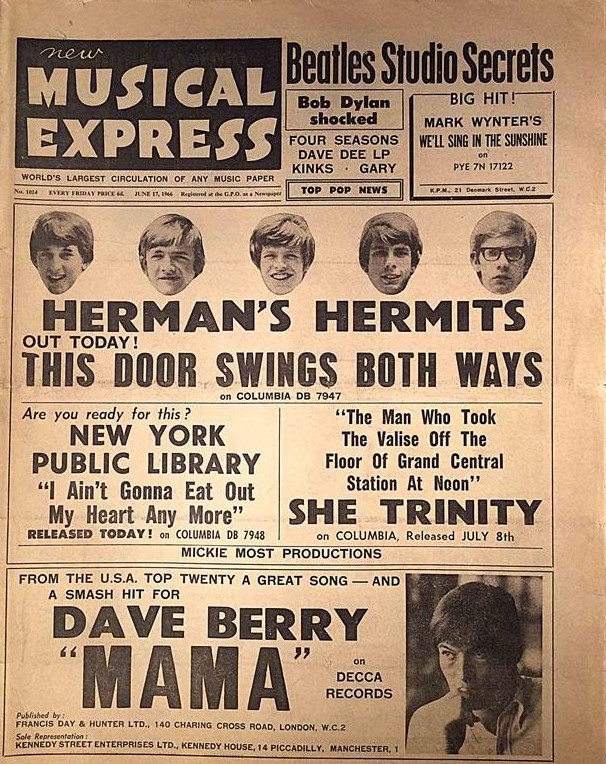 A few elements were overdubbed onto track one of the four-track tape, Ringo adding maracas and extra cymbals while McCartney played a rather unique instrument. In the June 17th, 1966 edition on New Musical Express, George Martin then attempted to create excited anticipation concerning something that was used on the upcoming "Revolver" album as "an instrument I bought myself! No, I can't tell you what it is just yet, or where I got it. All I can say is it cost me 110 pounds (equivalent to around 1700 British pounds in 2022). Paul burst his bubble in the following edition of New Musical Express by saying, "Why the mystery? It's only a clavichord and it makes a nice sound. There's no real weird stuff on this LP. Anyway, I've stopped regarding things as way-out anymore." A few elements were overdubbed onto track one of the four-track tape, Ringo adding maracas and extra cymbals while McCartney played a rather unique instrument. In the June 17th, 1966 edition on New Musical Express, George Martin then attempted to create excited anticipation concerning something that was used on the upcoming "Revolver" album as "an instrument I bought myself! No, I can't tell you what it is just yet, or where I got it. All I can say is it cost me 110 pounds (equivalent to around 1700 British pounds in 2022). Paul burst his bubble in the following edition of New Musical Express by saying, "Why the mystery? It's only a clavichord and it makes a nice sound. There's no real weird stuff on this LP. Anyway, I've stopped regarding things as way-out anymore."
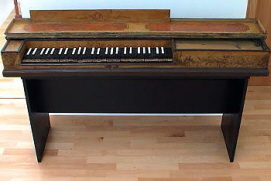 The clavichord is a vintage keyboard that has roots that go back to medieval times, this being an early forerunner of the piano. While being very similar to the harpsichord, one difference is that the clavichord has its horizontal strings struck with small brass wedges instead of being plucked as with the harpsichord. In 1982, George Martin remembered, "I brought it in from my home because I thought it had a nice sound. It was a very strange instrument to record, and Paul played it." Mark Lewisohn, in his 1987 book “The Beatles Recording Sessions,” insists that the clavichord was “hired at a cost of five guineas from George Martin’s AIR Company.” At 11 pm, the two Beatles called a halt to the session, which left the song as an instrumental, deciding to leave the vocals and other overdubs for another day. The recording of the song as it was at the end of this day appears on the 2022 Deluxe editions of "Revolver." The clavichord is a vintage keyboard that has roots that go back to medieval times, this being an early forerunner of the piano. While being very similar to the harpsichord, one difference is that the clavichord has its horizontal strings struck with small brass wedges instead of being plucked as with the harpsichord. In 1982, George Martin remembered, "I brought it in from my home because I thought it had a nice sound. It was a very strange instrument to record, and Paul played it." Mark Lewisohn, in his 1987 book “The Beatles Recording Sessions,” insists that the clavichord was “hired at a cost of five guineas from George Martin’s AIR Company.” At 11 pm, the two Beatles called a halt to the session, which left the song as an instrumental, deciding to leave the vocals and other overdubs for another day. The recording of the song as it was at the end of this day appears on the 2022 Deluxe editions of "Revolver."
 A week later, on May 16th, 1966, the time was apparently right to add Paul’s lead vocal onto "For No One," as well as other elements. This session took place in EMI Studio Two starting at 2:30 pm with at least Paul and Ringo present. Paul’s lead vocal on the song was overdubbed onto track four of the four-track tape with the tape machine running at 47 ½ cycles so that the song would be lowered from the key of C major to a semitone lower and at a slightly slower tempo. As explained in the book contained in the 2022 Deluxe editions of "Revolver," "Usually, this process was used in order that the tonal quality of the voice would be altered when the tape speed was returned to normal. Not this time. When reductions mixes 13 and 14 were made from 'take ten' onto another reel of tape, the playback machine ran at 47.5 kilocycles so that Paul's vocal remained in the same register as when it was recorded." A week later, on May 16th, 1966, the time was apparently right to add Paul’s lead vocal onto "For No One," as well as other elements. This session took place in EMI Studio Two starting at 2:30 pm with at least Paul and Ringo present. Paul’s lead vocal on the song was overdubbed onto track four of the four-track tape with the tape machine running at 47 ½ cycles so that the song would be lowered from the key of C major to a semitone lower and at a slightly slower tempo. As explained in the book contained in the 2022 Deluxe editions of "Revolver," "Usually, this process was used in order that the tonal quality of the voice would be altered when the tape speed was returned to normal. Not this time. When reductions mixes 13 and 14 were made from 'take ten' onto another reel of tape, the playback machine ran at 47.5 kilocycles so that Paul's vocal remained in the same register as when it was recorded."
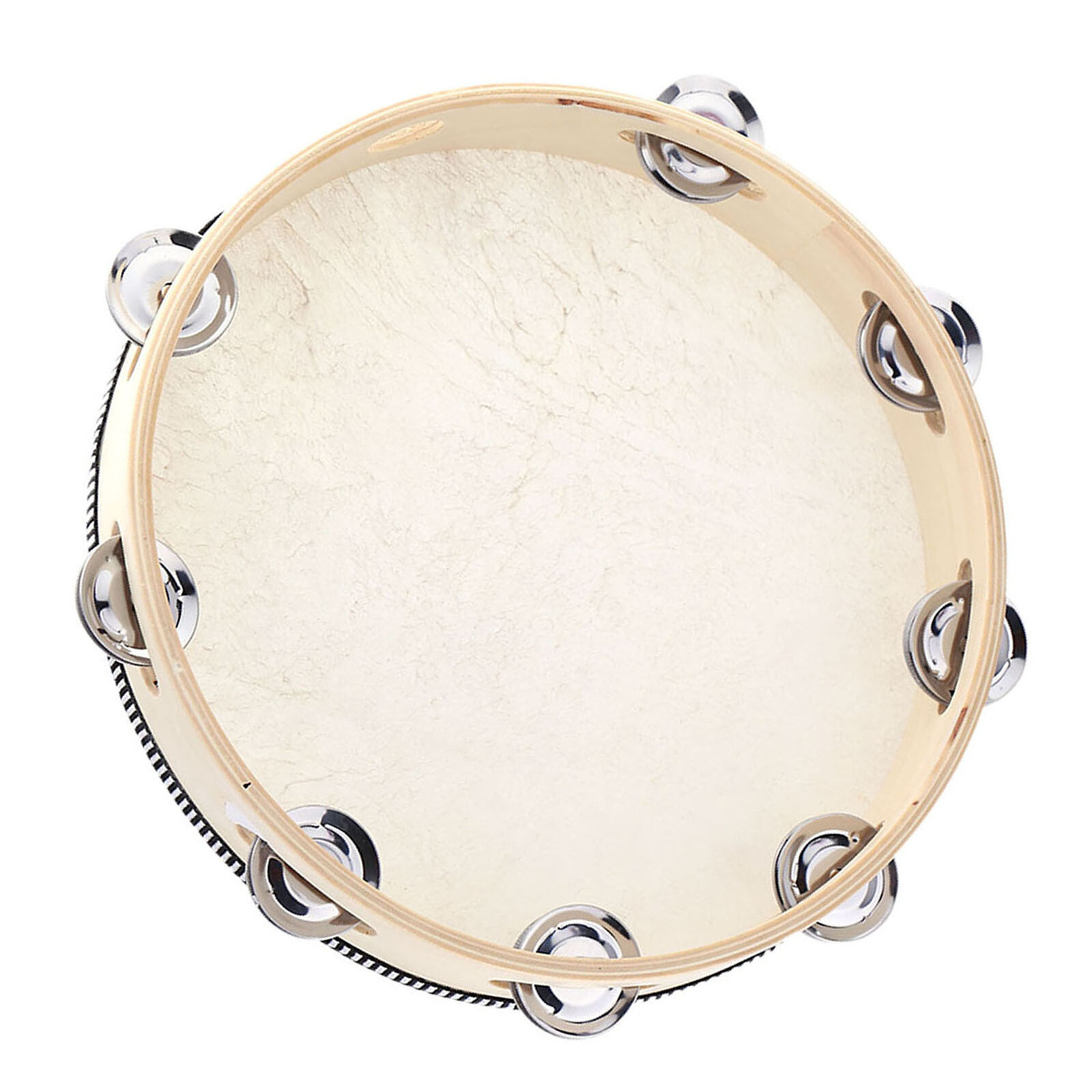 Therefore, after Paul's lead vocal filled track four of the four-track tape, two reduction mixes were then made, labelled "take 13" and "take 14," (for some reason neglecting takes 11 and 12) 'take 14' being deemed best. The "take 14" reduction mix combined tracks one, two and three of the original tape onto track one of the new tape with Paul's lead vocal from track four being designated to track four of the new tape, this leaving tracks two and three available for yet more overdubs. In the process, the official key of the song was now a semitone lower than C major as it was originally recorded. Onto this new tape, Ringo overdubbed tambourine onto track three while Paul added his bass guitar, which was apparently detuned appropriately to match the odd key the song was now presented in. Since a section of the song was left open for a solo, and one hadn’t been recorded yet, they left track two of the four-track tape open for another day. With tape copying and mixing being performed on other songs on this day, the session finally wound down at 1:30 am the next morning. Therefore, after Paul's lead vocal filled track four of the four-track tape, two reduction mixes were then made, labelled "take 13" and "take 14," (for some reason neglecting takes 11 and 12) 'take 14' being deemed best. The "take 14" reduction mix combined tracks one, two and three of the original tape onto track one of the new tape with Paul's lead vocal from track four being designated to track four of the new tape, this leaving tracks two and three available for yet more overdubs. In the process, the official key of the song was now a semitone lower than C major as it was originally recorded. Onto this new tape, Ringo overdubbed tambourine onto track three while Paul added his bass guitar, which was apparently detuned appropriately to match the odd key the song was now presented in. Since a section of the song was left open for a solo, and one hadn’t been recorded yet, they left track two of the four-track tape open for another day. With tape copying and mixing being performed on other songs on this day, the session finally wound down at 1:30 am the next morning.
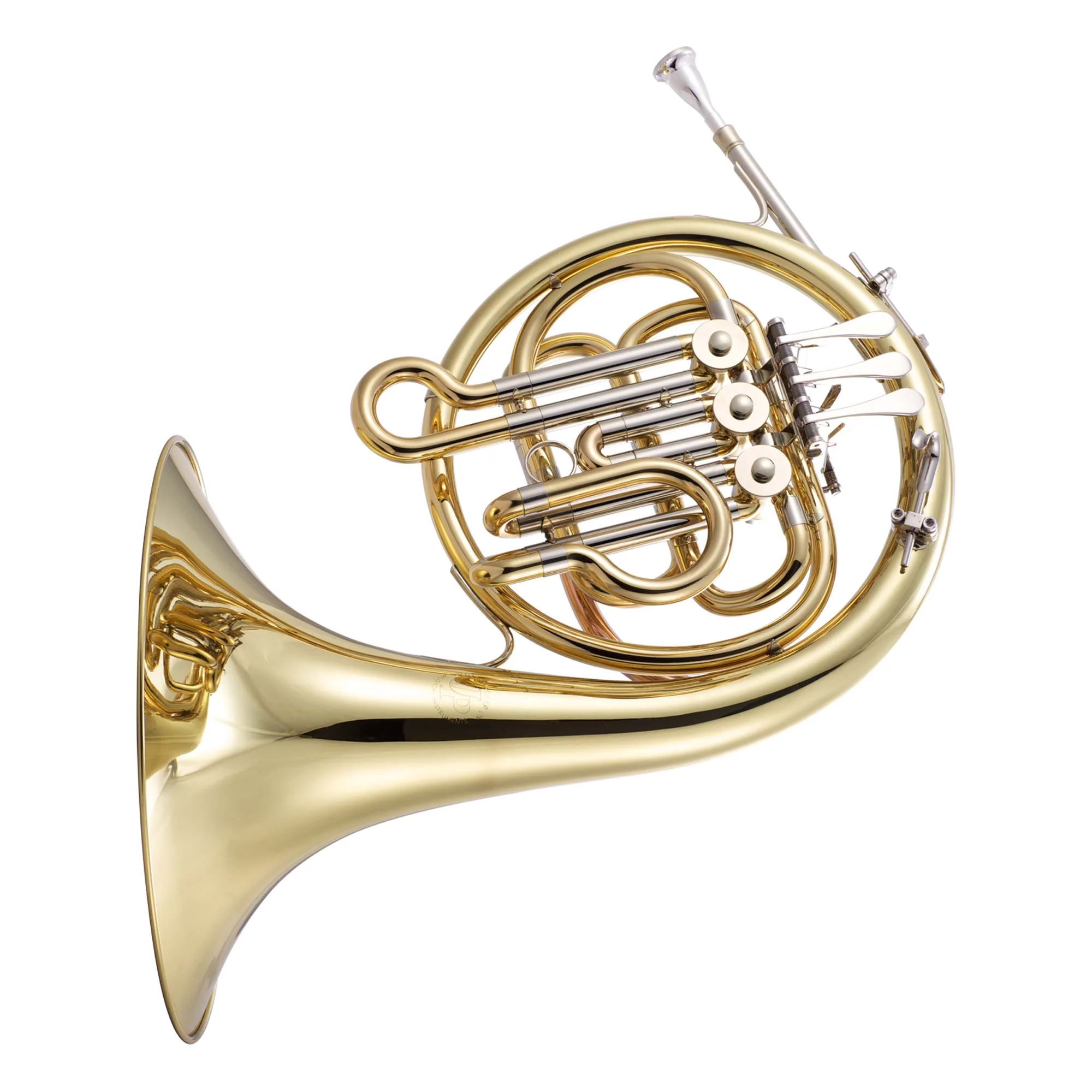 “Occasionally we’d have an idea for some new kind of instrumentation, particularly for solos,” remembers Paul. “On ‘For No One,’ I was interested in the French horn; because it was an instrument I’d always loved from when I was a kid. It’s a beautiful sound, so I went to George Martin and said, ‘How can we go about this?’ And he said, ‘Well, let me get the very finest.’ That was one of the great things about George (Martin). He knew how to obtain the best musicians and would suggest getting them. On this occasion he suggested Alan Civil, who, like all these great blokes, looks quite ordinary at the session – but plays like an angel.” “Occasionally we’d have an idea for some new kind of instrumentation, particularly for solos,” remembers Paul. “On ‘For No One,’ I was interested in the French horn; because it was an instrument I’d always loved from when I was a kid. It’s a beautiful sound, so I went to George Martin and said, ‘How can we go about this?’ And he said, ‘Well, let me get the very finest.’ That was one of the great things about George (Martin). He knew how to obtain the best musicians and would suggest getting them. On this occasion he suggested Alan Civil, who, like all these great blokes, looks quite ordinary at the session – but plays like an angel.”
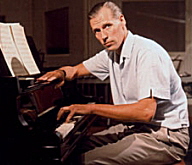 Alan Civil was the principal horn player in the New Philharmonia Orchestra, joining the BBC Symphony Orchestra later that year where he stayed for 22 years. “George Martin rang me up,” Alan Civil remembers, “and said ‘We want a French horn obbligato on a Beatles song. Can you do it?’ I knew George (Martin) from his very early days at EMI because I’d been doing a lot of freelance work then. So I turned up at Abbey Road (EMI) and all the bobbysoxers were hanging around outside and trying to look through the windows.” This session was on May 19th, 1966, in EMI Studio Three starting at 7 pm, Alan Civil recording his French horn part onto the only open track on the new four-track tape, this being track two. Alan Civil was the principal horn player in the New Philharmonia Orchestra, joining the BBC Symphony Orchestra later that year where he stayed for 22 years. “George Martin rang me up,” Alan Civil remembers, “and said ‘We want a French horn obbligato on a Beatles song. Can you do it?’ I knew George (Martin) from his very early days at EMI because I’d been doing a lot of freelance work then. So I turned up at Abbey Road (EMI) and all the bobbysoxers were hanging around outside and trying to look through the windows.” This session was on May 19th, 1966, in EMI Studio Three starting at 7 pm, Alan Civil recording his French horn part onto the only open track on the new four-track tape, this being track two.
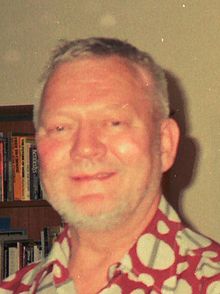 Alan Civil continues: “I thought the song was called ‘For Number One’ because I saw ‘For No One’ written down somewhere. Anyway, they played the existing tape to me, which was complete, and I thought it had been recorded in rather bad musical style, in that it was ‘in the cracks,’ neither B-flat nor B-major. This posed a certain difficulty in tuning my instrument. Paul said ‘We want something there. Can you play something that fits in?’ It was rather difficult to actually understand exactly what they wanted so I made something up which was middle register, a baroque style solo. I played it several times, each take wiping out the previous attempt.” Alan Civil continues: “I thought the song was called ‘For Number One’ because I saw ‘For No One’ written down somewhere. Anyway, they played the existing tape to me, which was complete, and I thought it had been recorded in rather bad musical style, in that it was ‘in the cracks,’ neither B-flat nor B-major. This posed a certain difficulty in tuning my instrument. Paul said ‘We want something there. Can you play something that fits in?’ It was rather difficult to actually understand exactly what they wanted so I made something up which was middle register, a baroque style solo. I played it several times, each take wiping out the previous attempt.”
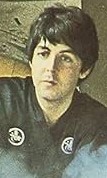 As for what melody Alan Civil played, Paul remembers it differently. “George (Martin) asked me, ‘Now, what do you want him to play?’ I said, ‘Something like this,’ and sang the solo to him, and he wrote it down. Towards the end of the session, when we were getting the piece down for Alan (Civil) to play, George explained to me the range of the instrument: ‘Well, it goes from here to this top E,’ and I said, ‘What if we ask him to play an F?’ George saw the joke and joined in the conspiracy. We came to the session and Alan (Civil) looked up from his bit of paper: ‘Eh, George? I think there’s a mistake here – you’ve got a high F written down.’ Then George and I said, ‘Yeah,’ and smiled back at him, and he knew what we were up to and played it. These great players will do it. Even though it’s officially off the end of their instrument, they can do it, and they’re quite into it occasionally. It’s a nice little solo.” As for what melody Alan Civil played, Paul remembers it differently. “George (Martin) asked me, ‘Now, what do you want him to play?’ I said, ‘Something like this,’ and sang the solo to him, and he wrote it down. Towards the end of the session, when we were getting the piece down for Alan (Civil) to play, George explained to me the range of the instrument: ‘Well, it goes from here to this top E,’ and I said, ‘What if we ask him to play an F?’ George saw the joke and joined in the conspiracy. We came to the session and Alan (Civil) looked up from his bit of paper: ‘Eh, George? I think there’s a mistake here – you’ve got a high F written down.’ Then George and I said, ‘Yeah,’ and smiled back at him, and he knew what we were up to and played it. These great players will do it. Even though it’s officially off the end of their instrument, they can do it, and they’re quite into it occasionally. It’s a nice little solo.”
 Engineer Geoff Emerick, in his book “Here, There And Everywhere,” gives his account of this day: “Alan (Civil) was under a lot of pressure doing that overdub, because it was so hard to hit the high note in the solo. In fact, most people would have never written that part for a French horn player because it was too high to play, but that was the note Paul wanted to hear, and so that was the note he was going to get. We felt that Alan (Civil), being the best horn player in London, could actually hit it, even though most horn players couldn’t. Alan (Civil) was reluctant to even try it; he was actually breaking out into a sweat, telling everyone it really shouldn’t be done. But eventually he gave it a go and pulled it off.” Engineer Geoff Emerick, in his book “Here, There And Everywhere,” gives his account of this day: “Alan (Civil) was under a lot of pressure doing that overdub, because it was so hard to hit the high note in the solo. In fact, most people would have never written that part for a French horn player because it was too high to play, but that was the note Paul wanted to hear, and so that was the note he was going to get. We felt that Alan (Civil), being the best horn player in London, could actually hit it, even though most horn players couldn’t. Alan (Civil) was reluctant to even try it; he was actually breaking out into a sweat, telling everyone it really shouldn’t be done. But eventually he gave it a go and pulled it off.”
 George Martin recalled: “Paul didn’t realize how brilliantly Alan Civil was doing. We got the definitive performance, and Paul said, ‘Well, OK, I think you can do it better than that, can’t you, Alan?’ Alan (Civil) nearly exploded. Of course, he didn’t do it better than that, and the way we’d already heard it was the way you hear it now.” Geoff Emerick added: “The Beatles were perfectionists, and they didn’t always understand…Paul’s attitude toward outside musicians was ‘You’re being paid to do a job, so just do it.’…There was also a generational clash, because most of those outside musicians were quite a bit older than The Beatles. They were pleased to be there, pleased to have the credit on their resumes, but they didn’t know how to relate to the music or the musicians, and The Beatles didn’t really know how to relate to them, either. George Martin served as the middleman, as the bridge between the two generations.” George Martin recalled: “Paul didn’t realize how brilliantly Alan Civil was doing. We got the definitive performance, and Paul said, ‘Well, OK, I think you can do it better than that, can’t you, Alan?’ Alan (Civil) nearly exploded. Of course, he didn’t do it better than that, and the way we’d already heard it was the way you hear it now.” Geoff Emerick added: “The Beatles were perfectionists, and they didn’t always understand…Paul’s attitude toward outside musicians was ‘You’re being paid to do a job, so just do it.’…There was also a generational clash, because most of those outside musicians were quite a bit older than The Beatles. They were pleased to be there, pleased to have the credit on their resumes, but they didn’t know how to relate to the music or the musicians, and The Beatles didn’t really know how to relate to them, either. George Martin served as the middleman, as the bridge between the two generations.”
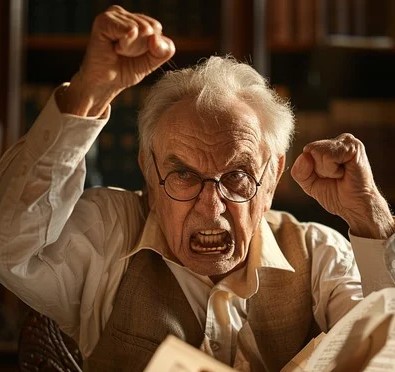 Geoff Emerick also recalled: “Though Alan (Civil) was a wreck by the time he left that session, he was well pleased with what he’d done, because it was the performance of his life. In fact, he became a star in his own right because of that, but the problem was that, from that day on, arrangers would expect other horn players to be able to do what he had done, and they were often disappointed if they gave parts to other players of lesser ability.” Geoff Emerick also recalled: “Though Alan (Civil) was a wreck by the time he left that session, he was well pleased with what he’d done, because it was the performance of his life. In fact, he became a star in his own right because of that, but the problem was that, from that day on, arrangers would expect other horn players to be able to do what he had done, and they were often disappointed if they gave parts to other players of lesser ability.”
 Alan Civil remembers: “My friends would ask, ‘What have you done this week?’ and I would say, ‘Oh, I played with Otto Klemperer and Rudolf Kempe’ – that didn’t mean anything to them. But to say that you’d played with The Beatles was amazing. The day would almost go into their diaries as being the day they met someone who’d played with The Beatles. Even now, while only a few people come up to me and say ‘I do like your Mozart horn concertos,’ so many others say, ‘See that big grey-haired old chap over there? – he played with The Beatles!’ For me it was just another day’s work, the third session that day in fact, but it was very interesting.” Alan Civil remembers: “My friends would ask, ‘What have you done this week?’ and I would say, ‘Oh, I played with Otto Klemperer and Rudolf Kempe’ – that didn’t mean anything to them. But to say that you’d played with The Beatles was amazing. The day would almost go into their diaries as being the day they met someone who’d played with The Beatles. Even now, while only a few people come up to me and say ‘I do like your Mozart horn concertos,’ so many others say, ‘See that big grey-haired old chap over there? – he played with The Beatles!’ For me it was just another day’s work, the third session that day in fact, but it was very interesting.”
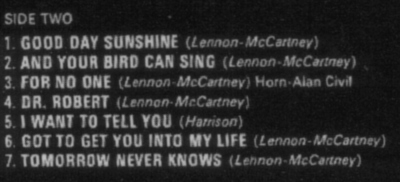 Alan Civil not only played his designated solo in the fourth verse, but he also reprised it in the sixth verse as well. With one final note at the end of the song, Alan Civil was done for the day, the four-hour session ending at 11 pm. He was paid 52 pounds and ten shillings for his work on this session (equivalent to around 1000 pounds in 2022), not to mention the coveted prize of receiving an actual credit on the back cover of a Beatles album, something almost no one could boast of up to this time. Alan Civil not only played his designated solo in the fourth verse, but he also reprised it in the sixth verse as well. With one final note at the end of the song, Alan Civil was done for the day, the four-hour session ending at 11 pm. He was paid 52 pounds and ten shillings for his work on this session (equivalent to around 1000 pounds in 2022), not to mention the coveted prize of receiving an actual credit on the back cover of a Beatles album, something almost no one could boast of up to this time.
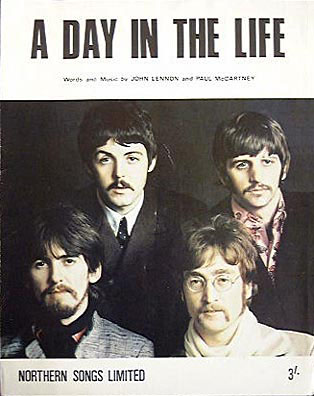 Alan Civil did return to EMI Studios to work along with The Beatles once again on February 10th, 1967 as one of the many orchestra musicians on “A Day In The Life.” Shortly after his interview with Mark Lewisohn for the book “The Beatles Recording Sessions,” he unfortunately passed away on March 19th, 1989 in his hometown of Lambeth, London, England at the young age of 59. Alan Civil did return to EMI Studios to work along with The Beatles once again on February 10th, 1967 as one of the many orchestra musicians on “A Day In The Life.” Shortly after his interview with Mark Lewisohn for the book “The Beatles Recording Sessions,” he unfortunately passed away on March 19th, 1989 in his hometown of Lambeth, London, England at the young age of 59.
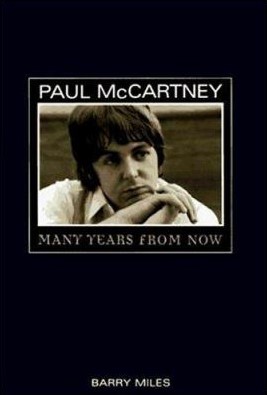 One matter needs to be settled regarding the choice of Alan Civil for this session. Paul McCartney’s book “Many Years From Now” relates how premier horn player Dennis Brain was originally booked for the “For No One” session but that he died in a car crash just before the day arrived. The facts reveal that Dennis Brain did indeed die from a car crash; however this was many years earlier, on September 1st, 1957. So the recollections of Paul McCartney and co-author Barry Miles were mistaken in this instance. One matter needs to be settled regarding the choice of Alan Civil for this session. Paul McCartney’s book “Many Years From Now” relates how premier horn player Dennis Brain was originally booked for the “For No One” session but that he died in a car crash just before the day arrived. The facts reveal that Dennis Brain did indeed die from a car crash; however this was many years earlier, on September 1st, 1957. So the recollections of Paul McCartney and co-author Barry Miles were mistaken in this instance.
June 6th, 1966 was the first attempt at mono mixing “For No One,” this being accomplished in the control room of EMI Studio Three by George Martin, Geoff Emerick and 2nd engineer Phil McDonald. Six attempts were made, but they were unsatisfied with the results and left it for another time.
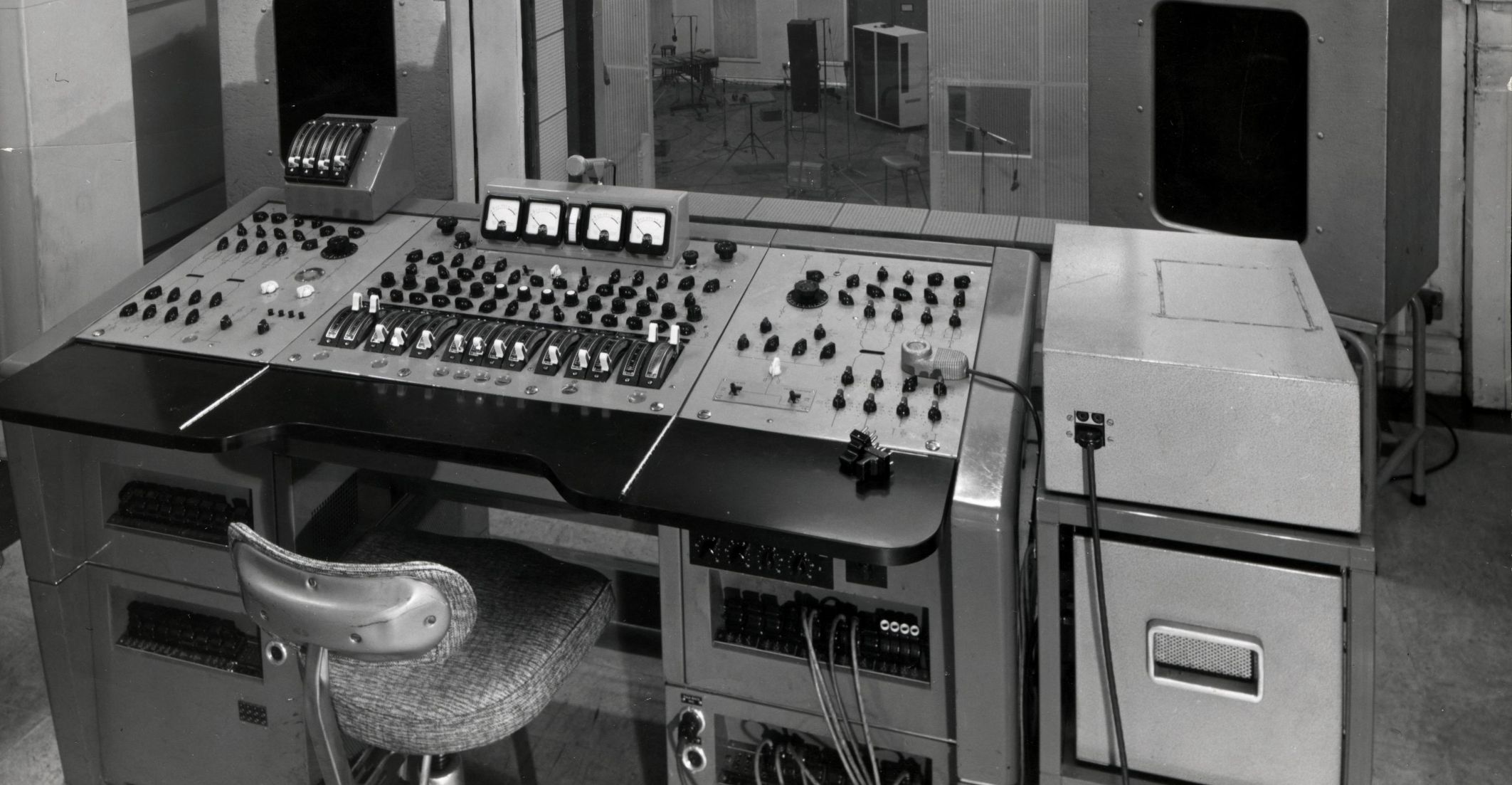 A marathon mixing session for the new “Revolver” album took place on June 21st, 1966 in the control room of EMI Studio Three with the very same production team presiding. Both the released mono and stereo mixes of the song were produced on this day, two attempts made for the mono (remix 6 being the keeper) while only one was needed to nail the stereo. The rhythm track of piano and quiet drums appears in the right channel along with the clavichord, while the French horn, the bass guitar and the tambourine are in the left channel. The lead vocals are centered in the mix. A marathon mixing session for the new “Revolver” album took place on June 21st, 1966 in the control room of EMI Studio Three with the very same production team presiding. Both the released mono and stereo mixes of the song were produced on this day, two attempts made for the mono (remix 6 being the keeper) while only one was needed to nail the stereo. The rhythm track of piano and quiet drums appears in the right channel along with the clavichord, while the French horn, the bass guitar and the tambourine are in the left channel. The lead vocals are centered in the mix.
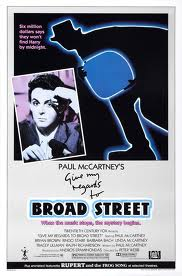 Sometime between November of 1982 and July of 1983, Paul recorded a new studio version of “For No One” for inclusion in the film and soundtrack album for his “Give My Regards To Broad Street” movie project. The actual recording was previewed for George Martin, who was brought in as producer of this project, by a pretty and yet comical acoustic guitar demo from Paul. This demo brings out the beauty of the piece while Paul sings the French horn solo to a tee. As for the film and soundtrack version, a string section and an actual French horn soloist are employed to good effect. Sometime between November of 1982 and July of 1983, Paul recorded a new studio version of “For No One” for inclusion in the film and soundtrack album for his “Give My Regards To Broad Street” movie project. The actual recording was previewed for George Martin, who was brought in as producer of this project, by a pretty and yet comical acoustic guitar demo from Paul. This demo brings out the beauty of the piece while Paul sings the French horn solo to a tee. As for the film and soundtrack version, a string section and an actual French horn soloist are employed to good effect.
 Sometime in 2022, George Martin's son Giles Martin, along with engineer Sam Okell, returned to the original four-track tapes of "For No One" in order to create a vibrant new stereo mix for inclusion in the 2022 re-release of "Revolver." While they were at it, they also created a mix of the song as it appeared at the conclusion of their May 9th, 1966 recording session, this being an instrumental version by Paul on piano and Ringo on drums along with an overdub of Paul on clavichord and Ringo on shaker, a bit of studio chatter also being kept in for posterity. Sometime in 2022, George Martin's son Giles Martin, along with engineer Sam Okell, returned to the original four-track tapes of "For No One" in order to create a vibrant new stereo mix for inclusion in the 2022 re-release of "Revolver." While they were at it, they also created a mix of the song as it appeared at the conclusion of their May 9th, 1966 recording session, this being an instrumental version by Paul on piano and Ringo on drums along with an overdub of Paul on clavichord and Ringo on shaker, a bit of studio chatter also being kept in for posterity.
Song Structure and Style
The structure of “For No One” is quite busy, encompassing six eight-measure verses (one slotted for the French horn solo) and three ten-measure choruses. The format is very symmetrical, fitting together as ‘verse/ verse/ chorus/ verse/ verse (solo)/ chorus/ verse/ verse/ chorus’ (or aabaabaab). So concise is this structure that no introduction or conclusion were deemed necessary.
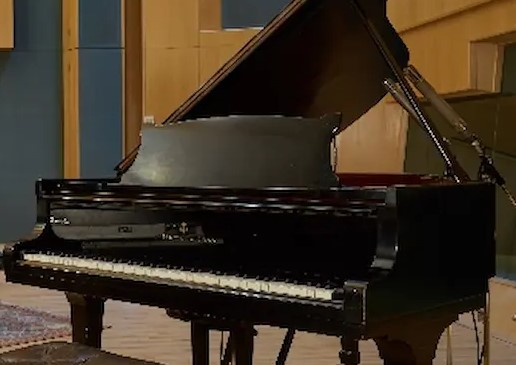 The first verse begins immediately with the subdued sound of piano and hi-hat from the rhythm track overshadowed by the overdubbed clavichord as the more predominant instrument. Paul’s single-tracked lead vocal begins on the two-beat of the very first measure, his being the only voice heard throughout the entire song. A second eight-measure verse enters in immediately afterward with the same simple instrumentation. Both verses contain a couple "blue notes" – that is, notes that add a slight "bluesy" feel to the melody line. In the first verse, it appears on the lyric “when she no longer needs you,” and then on “hurry, she no longer needs you” in the second verse. The first verse begins immediately with the subdued sound of piano and hi-hat from the rhythm track overshadowed by the overdubbed clavichord as the more predominant instrument. Paul’s single-tracked lead vocal begins on the two-beat of the very first measure, his being the only voice heard throughout the entire song. A second eight-measure verse enters in immediately afterward with the same simple instrumentation. Both verses contain a couple "blue notes" – that is, notes that add a slight "bluesy" feel to the melody line. In the first verse, it appears on the lyric “when she no longer needs you,” and then on “hurry, she no longer needs you” in the second verse.
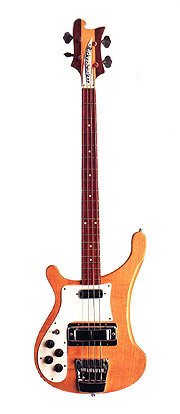 The chorus is next to appear, Paul beginning the lyrics as a run-in in the last measure of the previous verse with the lyrics “and in her eyes.” The chorus brings new instrumentation into the song's palette, the bass guitar and tambourine emerging as the piano now takes center stage, the clavichord standing down in the mix at this point. The key also dramatically changes from C major in the verses to D minor in the chorus. After the poignant line “a love that should have lasted years,” a tenth measure is inserted to transition back from D minor to C major to start another chorus. Notice here that Ringo continues a straight tambourine beat in the final measure as he’s played throughout the chorus, something that he’ll change in future choruses. The chorus is next to appear, Paul beginning the lyrics as a run-in in the last measure of the previous verse with the lyrics “and in her eyes.” The chorus brings new instrumentation into the song's palette, the bass guitar and tambourine emerging as the piano now takes center stage, the clavichord standing down in the mix at this point. The key also dramatically changes from C major in the verses to D minor in the chorus. After the poignant line “a love that should have lasted years,” a tenth measure is inserted to transition back from D minor to C major to start another chorus. Notice here that Ringo continues a straight tambourine beat in the final measure as he’s played throughout the chorus, something that he’ll change in future choruses.
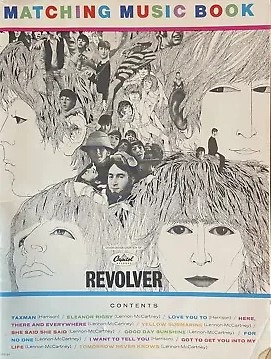 The third verse then appears, bringing the clavichord back into prominent view, although the bass and tambourine apparently are here to stay at this point. The final measure of this verse displays the gradual increase in volume of the French horn, which plays its lilting obbligato that thereby completely overtakes the fourth verse, transforming this section of the song into the instrumental solo feature. The third verse then appears, bringing the clavichord back into prominent view, although the bass and tambourine apparently are here to stay at this point. The final measure of this verse displays the gradual increase in volume of the French horn, which plays its lilting obbligato that thereby completely overtakes the fourth verse, transforming this section of the song into the instrumental solo feature.
During the final notes of the French horn solo in the last measure, McCartney once again begins singing his vocal melody line for the repeated chorus which immediately follows the solo verse. Once again the piano figure overshadows the clavichord, which adds a slight classical feel to the song. This time, Ringo decides to shake the tambourine during the final measure as a backdrop to the key change back to another verse. One can assume that this was planned for this transition but was forgotten the first time around.
 Another set of verses are next to appear, the clavichord once again being the dominant instrument. The second of these verses is unique in two respects, one being that Paul appears to repeat the first verse at this point with the lyrics “your day breaks, your mind aches.” Repeating the first verse later in the song is a classic Beatles ploy, something that they’ve used extensively throughout their career up to this point, so it’s definitely expected. However, the lyrics then expand the story yet further with the lyric “there will be times when all the things she said…” The other unique aspect of this verse is the reprise of the French horn solo directly on top of Paul’s vocal track. He actually only performs the first half of the solo while letting his final note trail off in the fifth measure. Another set of verses are next to appear, the clavichord once again being the dominant instrument. The second of these verses is unique in two respects, one being that Paul appears to repeat the first verse at this point with the lyrics “your day breaks, your mind aches.” Repeating the first verse later in the song is a classic Beatles ploy, something that they’ve used extensively throughout their career up to this point, so it’s definitely expected. However, the lyrics then expand the story yet further with the lyric “there will be times when all the things she said…” The other unique aspect of this verse is the reprise of the French horn solo directly on top of Paul’s vocal track. He actually only performs the first half of the solo while letting his final note trail off in the fifth measure.
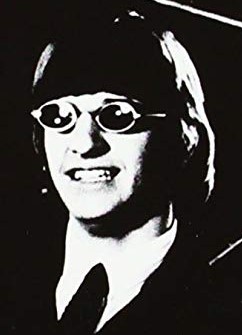 One final chorus completes the picture, bringing back the classical piano fingering as the stand-out instrument. The final measure, which usually is used to bring us back to the key of C major, is instead used to let the music hang in the air and thereby leave the story unresolved, creating a ‘to be continued' effect. Ringo remembers to shake the tambourine during this point as Alan Civil plays one last hanging note as a beautiful finishing touch. The sustained chords at the conclusion of the song are also slowed down for great effect, something that Paul was prone to do in every chorus when he performed the song in later years. One final chorus completes the picture, bringing back the classical piano fingering as the stand-out instrument. The final measure, which usually is used to bring us back to the key of C major, is instead used to let the music hang in the air and thereby leave the story unresolved, creating a ‘to be continued' effect. Ringo remembers to shake the tambourine during this point as Alan Civil plays one last hanging note as a beautiful finishing touch. The sustained chords at the conclusion of the song are also slowed down for great effect, something that Paul was prone to do in every chorus when he performed the song in later years.
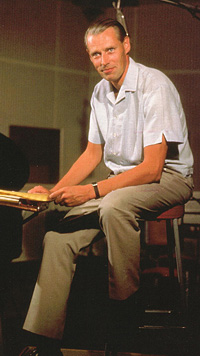 Needless to say, this is Paul’s baby through-and-through, undoubtedly with the classically-trained assistance from producer George Martin for the arrangement. His piano and clavichord playing is performed flawlessly and fitting for the intended feel of the song, as is his precise bass performance which switches octaves for his descending lines when deemed appropriate. His vocals, single-tracked to accentuate the desperation of the subject matter, are voiced strategically and precisely. Needless to say, this is Paul’s baby through-and-through, undoubtedly with the classically-trained assistance from producer George Martin for the arrangement. His piano and clavichord playing is performed flawlessly and fitting for the intended feel of the song, as is his precise bass performance which switches octaves for his descending lines when deemed appropriate. His vocals, single-tracked to accentuate the desperation of the subject matter, are voiced strategically and precisely.
Ringo may have been used only as window dressing for the occasion, but the subtlety of his performance was just what was needed. No wonder his initial drum track was buried in the mix - so as to hide the cloying snare drum beats that would have spoiled the mood (evidenced by bootleg recordings that have surfaced). Nonetheless, his hi-hat splashes, tambourine work with alternating accent patterns and shaker suit the arrangement nicely.
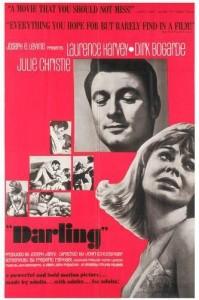 The beautifully played Alan Civil French horn solos are arguably the most striking feature of the track. While it does appear slightly rushed in places both times his solo appears (which may have been why Paul suggested for him to try again), this can easily be overlooked as a human flaw that adds character to such a mature piece of work. The beautifully played Alan Civil French horn solos are arguably the most striking feature of the track. While it does appear slightly rushed in places both times his solo appears (which may have been why Paul suggested for him to try again), this can easily be overlooked as a human flaw that adds character to such a mature piece of work.
The lyrics display the vulnerability and helplessness of his situation, underpinned by the inevitability of a failed relationship. Possibly inspired by viewing the John Schlesinger film “Darling” (as suggested by Ian MacDonald in his book “Revolution In The Head”), the male character interprets “all her (previous) words of kindness” as things of the past, them just 'lingering on' in his mind as a pleasant memory.
 The woman here is depicted as going through her daily routine (“she wakes up, she makes up”) as well as outside interests (“you stay home, she goes out”) without any need for him anymore. Her attitude or inner thoughts are even apparent, the line “she says that long ago she knew someone, but now he’s gone, she doesn’t need him” obviously being a reference to the main character as "the man I once knew." The woman here is depicted as going through her daily routine (“she wakes up, she makes up”) as well as outside interests (“you stay home, she goes out”) without any need for him anymore. Her attitude or inner thoughts are even apparent, the line “she says that long ago she knew someone, but now he’s gone, she doesn’t need him” obviously being a reference to the main character as "the man I once knew."
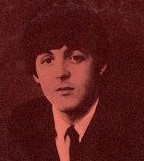 The most stinging lyric in the song, her straightforward statement that “her love is dead,” is greeted with a frank dismissal. Even though “in her eyes you see nothing” and she even states this to be a fact, you still “think she needs you.” After all, “you want her, you need her” and it's gut wrenching to come to terms with the fact that the love affair is coming to an end. In the morning, when “day breaks” and one can think more clearly, he will play out the true scenario in his mind (“all the things she said will fill your head”) and he’ll finally face the truth. Although this love “should have lasted years,” it really is over and time to move on. The most stinging lyric in the song, her straightforward statement that “her love is dead,” is greeted with a frank dismissal. Even though “in her eyes you see nothing” and she even states this to be a fact, you still “think she needs you.” After all, “you want her, you need her” and it's gut wrenching to come to terms with the fact that the love affair is coming to an end. In the morning, when “day breaks” and one can think more clearly, he will play out the true scenario in his mind (“all the things she said will fill your head”) and he’ll finally face the truth. Although this love “should have lasted years,” it really is over and time to move on.
American Releases
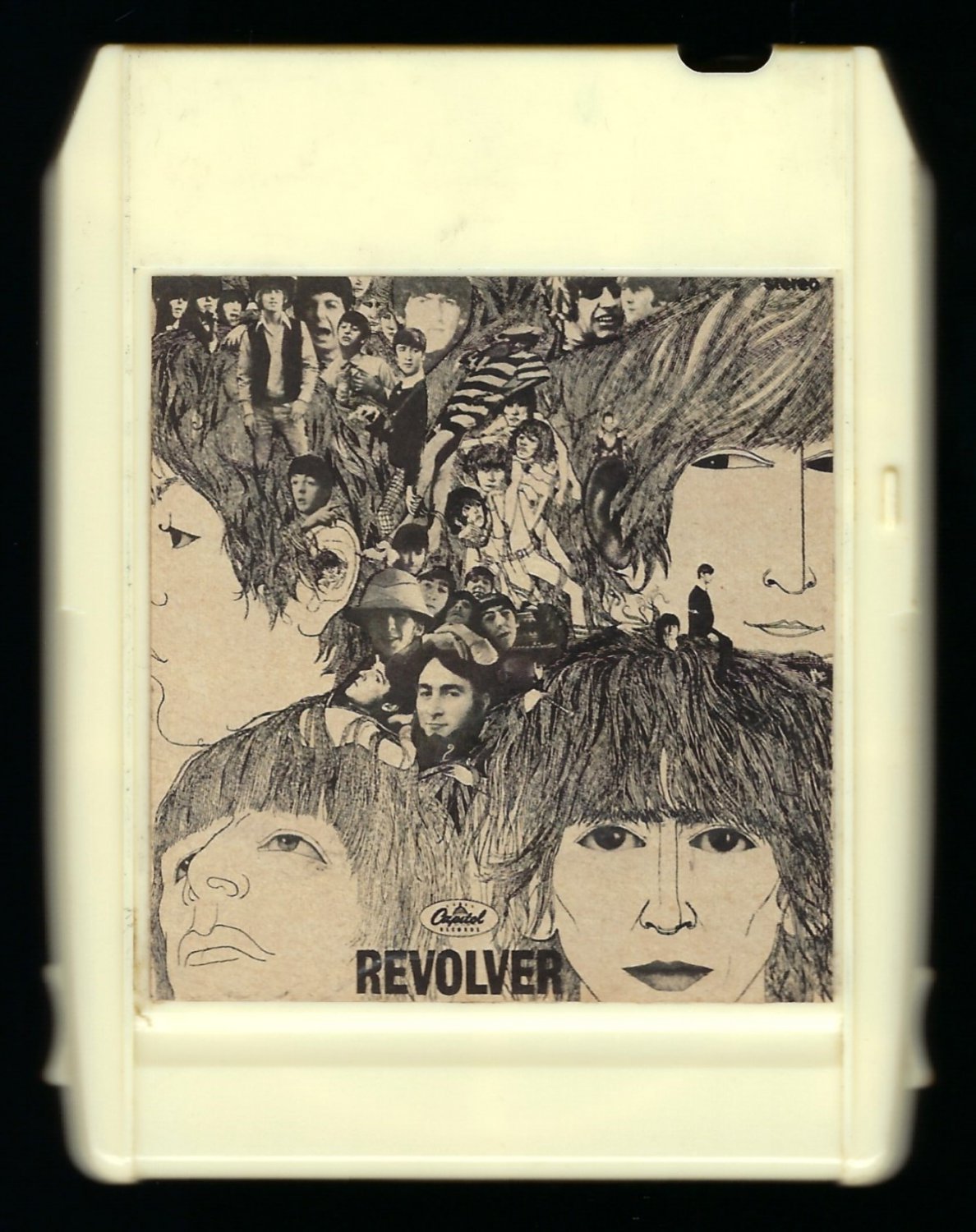 August 8th, 1966, was the release date of the eleven-track American version of the “Revolver” album. This ‘Paul heavy’ track list paired “For No One” directly after his lead vocal song “Good Day Sunshine,” presenting the album to the US market as dominated by "the cute Beatle." The American version of the "Revolver" album got a compact disc release on January 21st, 2014, with both the mono and stereo versions contained on a single CD. August 8th, 1966, was the release date of the eleven-track American version of the “Revolver” album. This ‘Paul heavy’ track list paired “For No One” directly after his lead vocal song “Good Day Sunshine,” presenting the album to the US market as dominated by "the cute Beatle." The American version of the "Revolver" album got a compact disc release on January 21st, 2014, with both the mono and stereo versions contained on a single CD.
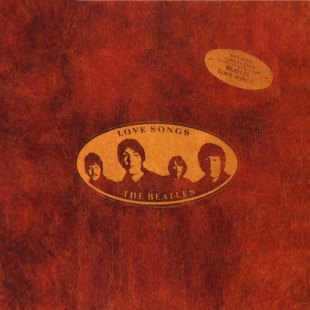 A new compilation double-album was released on October 21st, 1977 entitled “Love Songs.” While “For No One” doesn’t exactly engender romantic feelings, rather the loss of love, it still earned its place on the album. When you come to think of it, “Yesterday” is also about an end of a romance so, I guess, “For No One” fits just as well into the "love song" category. A new compilation double-album was released on October 21st, 1977 entitled “Love Songs.” While “For No One” doesn’t exactly engender romantic feelings, rather the loss of love, it still earned its place on the album. When you come to think of it, “Yesterday” is also about an end of a romance so, I guess, “For No One” fits just as well into the "love song" category.
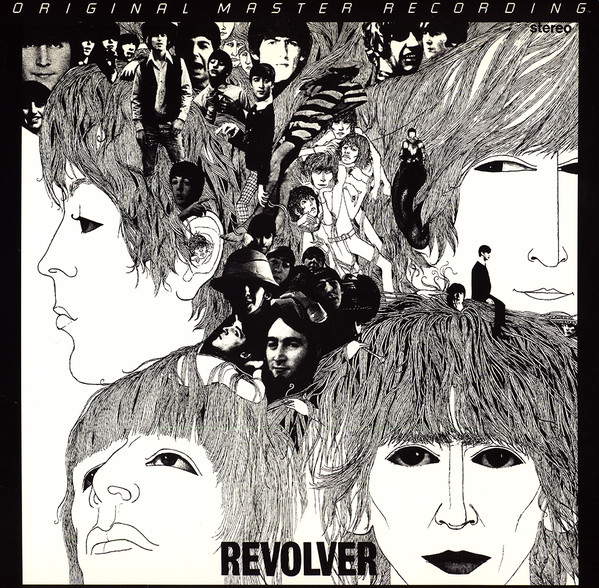 The first time the original British "Revolver” album was made available in America was the "Original Master Recording" vinyl edition released through Mobile Fidelity Sound Lab sometime in 1985. This album included "For No One" and was prepared utilizing half-speed mastering technology from the original master tape on loan from EMI. This version of the album was only available for a short time and is quite collectible today. The first time the original British "Revolver” album was made available in America was the "Original Master Recording" vinyl edition released through Mobile Fidelity Sound Lab sometime in 1985. This album included "For No One" and was prepared utilizing half-speed mastering technology from the original master tape on loan from EMI. This version of the album was only available for a short time and is quite collectible today.
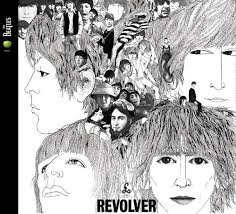 April 30th, 1987, was the date that the original British fourteen-track “Revolver” album was issued in the US in the compact disc format, a vinyl edition coming out on July 21st, 1987. Placing “For No One” in between two Lennon vocal songs, “And Your Bird Can Sing” and “Dr. Robert,” gave the intended group feel to the album. It was then remastered and re-released on CD on September 9th, 2009 and on vinyl on November 13th, 2012. A remarkable newly mixed edition of "Revolver" created by Giles Martin was released on vinyl and CD on October 28th, 2022. April 30th, 1987, was the date that the original British fourteen-track “Revolver” album was issued in the US in the compact disc format, a vinyl edition coming out on July 21st, 1987. Placing “For No One” in between two Lennon vocal songs, “And Your Bird Can Sing” and “Dr. Robert,” gave the intended group feel to the album. It was then remastered and re-released on CD on September 9th, 2009 and on vinyl on November 13th, 2012. A remarkable newly mixed edition of "Revolver" created by Giles Martin was released on vinyl and CD on October 28th, 2022.
 Also released on September 9th, 2009 was the CD box set "The Beatles In Mono," the vinyl edition first coming out on September 9th, 2014. The original mono mix of “For No One,” as originally heard on mono pressings of “Revolver” worldwide, was featured in this box set in a clean remastered condition. Also released on September 9th, 2009 was the CD box set "The Beatles In Mono," the vinyl edition first coming out on September 9th, 2014. The original mono mix of “For No One,” as originally heard on mono pressings of “Revolver” worldwide, was featured in this box set in a clean remastered condition.
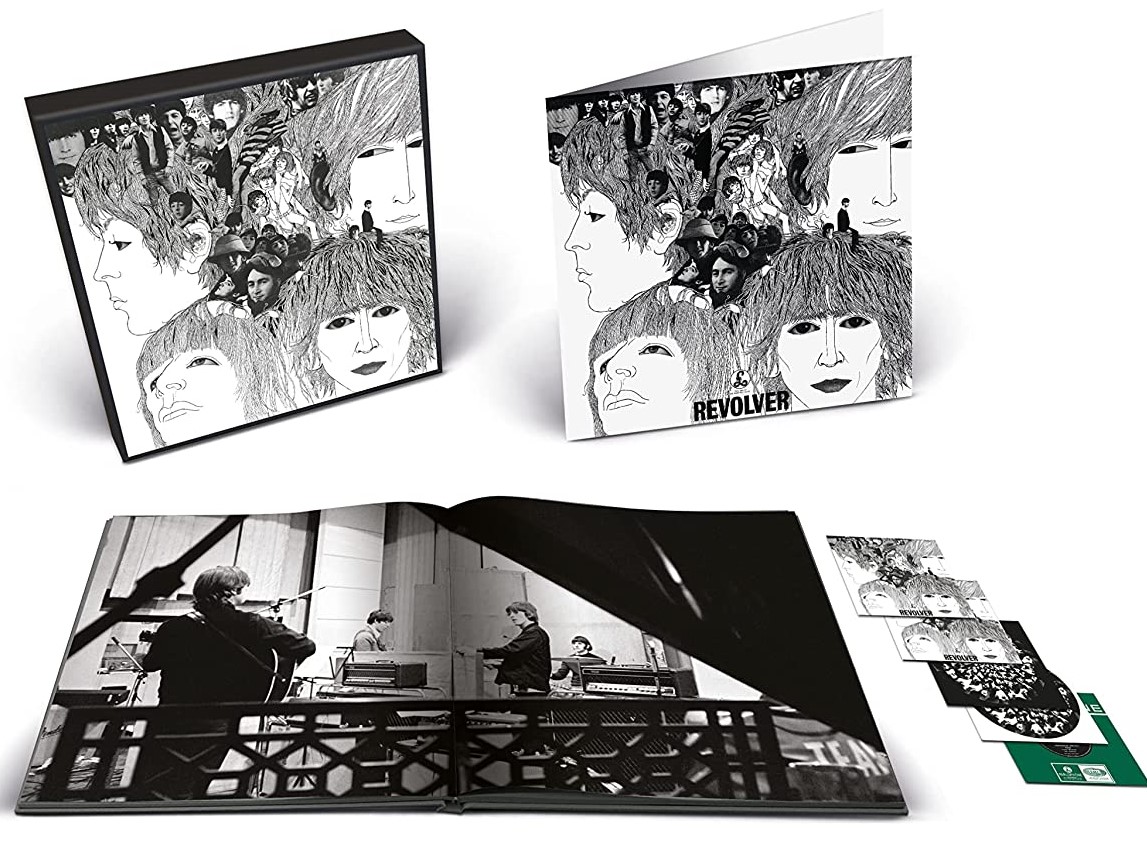 On October 28th, 2022, various new editions of the 14 track “Revolver” album were released that feature the amazing new stereo mix by Giles Martin. The “Special Edition Deluxe 2CD Set” features “For No One” in its new stereo mix as well as “take 10 backing track” from the original 1966 session tapes. Additionally, the “Deluxe Edition,” available in both a 5 CD box set and a 4LP / 1 EP box set, includes these versions as well as the original mono master from 1966. The 2022 Giles Martin stereo mix of the album was also made available for the first time as a vinyl picture disc for a limited time. On October 28th, 2022, various new editions of the 14 track “Revolver” album were released that feature the amazing new stereo mix by Giles Martin. The “Special Edition Deluxe 2CD Set” features “For No One” in its new stereo mix as well as “take 10 backing track” from the original 1966 session tapes. Additionally, the “Deluxe Edition,” available in both a 5 CD box set and a 4LP / 1 EP box set, includes these versions as well as the original mono master from 1966. The 2022 Giles Martin stereo mix of the album was also made available for the first time as a vinyl picture disc for a limited time.
The newly created studio recording of “For No One” was released on the soundtrack album to Paul’s movie “Give My Regards To Broad Street” on October 22nd, 1984.
Live Performances
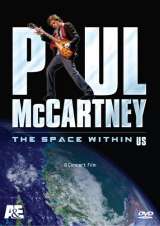 Since The Beatles never performed any songs from the “Revolver” album live, “For No One” never saw a concert stage until Paul began his solo touring days. His “2004 Summer Tour,” which ran from May 25th to June 26th of that year, included the song for the first time. He continued to include the song in the set list for the following year's “US Tour,” which ran from September 16th to November 30th, 2005. The solo piano performance from this tour (with Paul Wickens playing the French horn part on synthesizer) was featured on his DVD “The Space Within US.” Since he didn't feature the song in tours that coincided with live record releases, "For No One" has never been included on any of his many live albums. Since The Beatles never performed any songs from the “Revolver” album live, “For No One” never saw a concert stage until Paul began his solo touring days. His “2004 Summer Tour,” which ran from May 25th to June 26th of that year, included the song for the first time. He continued to include the song in the set list for the following year's “US Tour,” which ran from September 16th to November 30th, 2005. The solo piano performance from this tour (with Paul Wickens playing the French horn part on synthesizer) was featured on his DVD “The Space Within US.” Since he didn't feature the song in tours that coincided with live record releases, "For No One" has never been included on any of his many live albums.
Conclusion
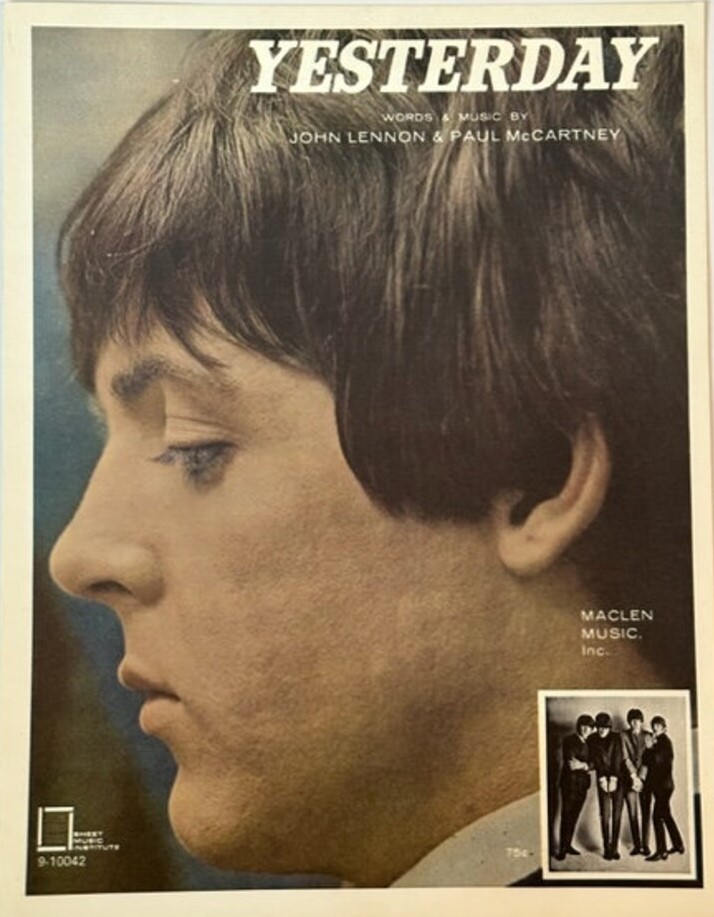 Paul’s development as a songwriter could not be any more apparent than on “For No One,” his convincing depiction of solitude and disbelief running rings around the similar subject of “Yesterday” from the previous year. His melancholy lyrics play perfectly against the masterful descending chord patterns and melody line. Even the melody of the French horn part depicts the sorrow of lost love. No other Beatles album up to this point could have housed as evocative of a song as this, both an expression of wanting and of loss. Hardly the typical offering of teen pop stars, but soon to be the touchstone to measure from, The Beatles set the bar very high! Paul’s development as a songwriter could not be any more apparent than on “For No One,” his convincing depiction of solitude and disbelief running rings around the similar subject of “Yesterday” from the previous year. His melancholy lyrics play perfectly against the masterful descending chord patterns and melody line. Even the melody of the French horn part depicts the sorrow of lost love. No other Beatles album up to this point could have housed as evocative of a song as this, both an expression of wanting and of loss. Hardly the typical offering of teen pop stars, but soon to be the touchstone to measure from, The Beatles set the bar very high!
“For No One”
Written by: John Lennon / Paul McCartney
-
Song Written: March, 1966
-
Song Recorded: May 9, 16 & 19, 1966
-
First US Release Date: August 8, 1966
-
First US Album Release: Capitol #ST-2576 “Revolver”
-
US Single Release: n/a
-
Highest Chart Position: n/a
-
British Album Release: Parlophone #PCS 7009 “Revolver”
-
Length: 2:03
-
Key: C major
-
Producer: George Martin
-
Engineers: Geoff Emerick, Phil McDonald
Instrumentation (most likely):
-
Paul McCartney -- Lead Vocals, Piano (Hamburg Steinway Baby Grand), Clavichord, Bass Guitar (1964 Rickenbacker 4001S)
-
Ringo Starr – Drums (1964 Ludwig Super Classic Black Oyster Pearl), shaker, tambourine
-
Alan Civil - French horn
Written and compiled by Dave Rybaczewski
|
IF YOU WOULD LIKE TO MAKE A DONATION TO KEEP THIS WEBSITE UP AND RUNNING, PLEASE CLICK BELOW!
Sign Up Below for our MONTHLY BEATLES TRIVIA QUIZ!
|